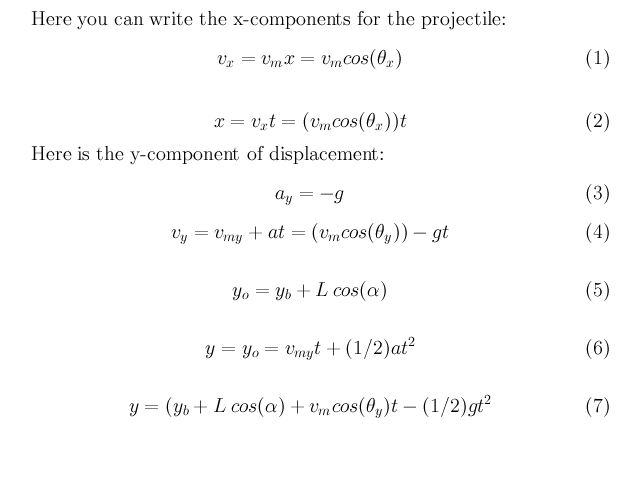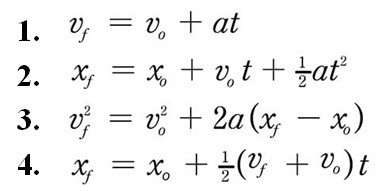
(i) How long would the cannon ball remain airborne before impacting the ground? (ii) What is the vertical and horizontal displacement of the cannonball when it strikes the ground? (iii) Which answers above change if the launch velocity was reduced to 150 m/s?ġ0. A cannon fires a cannonball with a velocity of 200 m/s with its barrel horizontal at a height of 1.2 m above the ground.

(i) What is the stone’s vertical displacement after 1.0 s? (ii) What is the stone’s vertical displacement after 2.0 s?ĩ. A stone is thrown horizontally from a cliff with a velocity of 12 m/s. If the chute fails to open and air resistance does not affect the motion, (i) in what amount of time would this package impact the ground? (ii) What horizontal distance would this package have traveled? (iii) What would be the package’s impact speed? (Ignore air resistance.)Ĩ. A UN airplane on a rescue mission into hostile territory has a horizontal velocity of 500 km/h and drops a supply package at an altitude of 1500 m. At what velocity (vertical and horizontal) does this car strike the ground?ħ. A car drives over a 20 m vertical drop traveling at 75 km/h. How far forwards from the spot over which it dropped does the sack land? (Ignore air resistance.)Ħ. A sack of flour is dropped from an airplane traveling at 125 m/s horizontally when 490 m above ground. Will the balloon hit a sunbather tanning on the ground that is 12 m away from the base of the window?ĥ. A water balloon is thrown out of a window (10.0 m above ground) with a horizontal velocity of 6.0 m/s.

How high was the cliff and how far from its base did this diver hit the water? Cliff jumping by Dennis Barnes is under a CC BY NC-ND 2.0 licenseĤ. A diver running 3.5 m/s dives from the edge of a vertical cliff and reaches the water below 1.5 s later. At what amount of time before they fly over the people should the aircraft drop emergency supplies?ģ. A sea rescue airplane flying at 120 km/h and 45 m above water discovers shipwrecked people floating in a group. With what horizontal velocity was this rock thrown?Ģ. By the time it strikes the water 44.1 m below, the rock has traveled a horizontal displacement of 15.0 m. A rock is thrown horizontally from a bridge. \overrightarrow = – 44 m vertical and 60 m horizontalġ. V is Average Speed, commonly measured in Metres/Second (m/s) or Kilometres/Hour (km/h)

All measures are separated into vertical and horizontal components and assume zero air resistance.


 0 kommentar(er)
0 kommentar(er)
